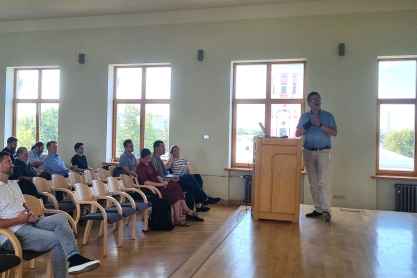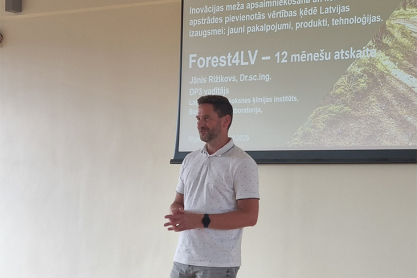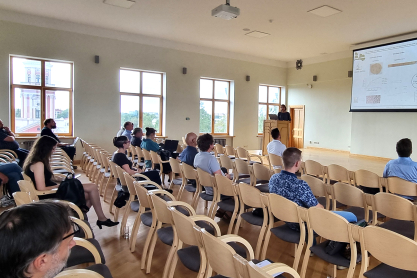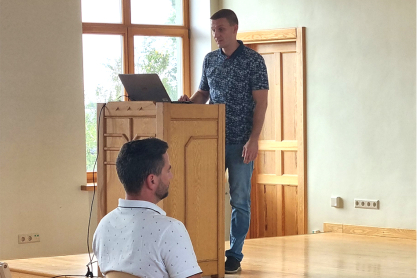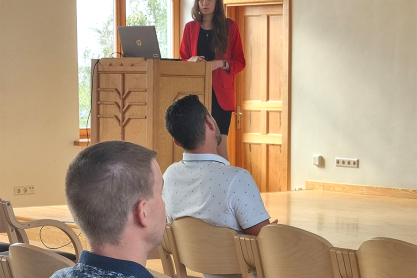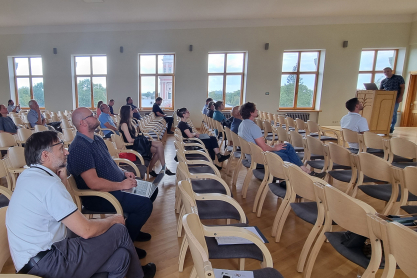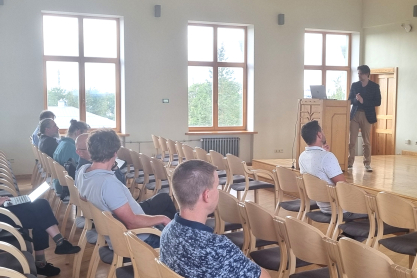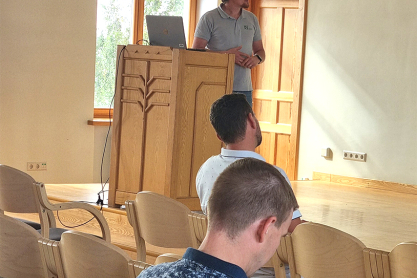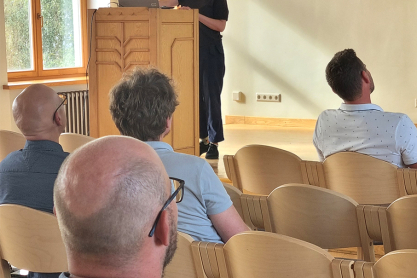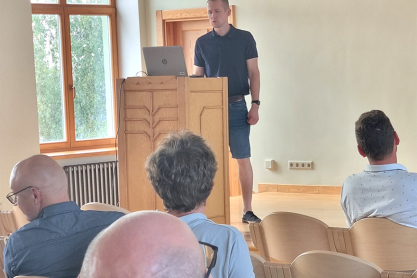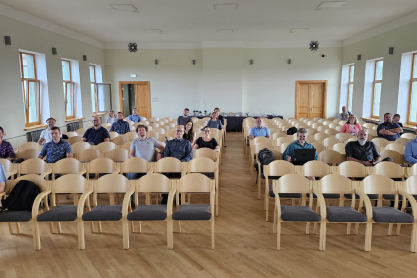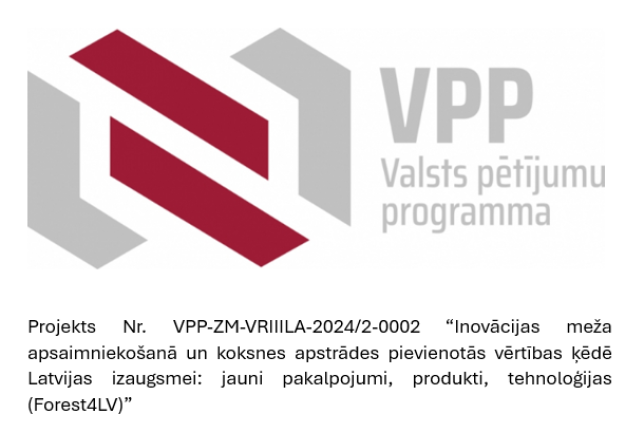Science for the Growth of the Forest Sector: Forest4LV Annual Progress Event in Jelgava
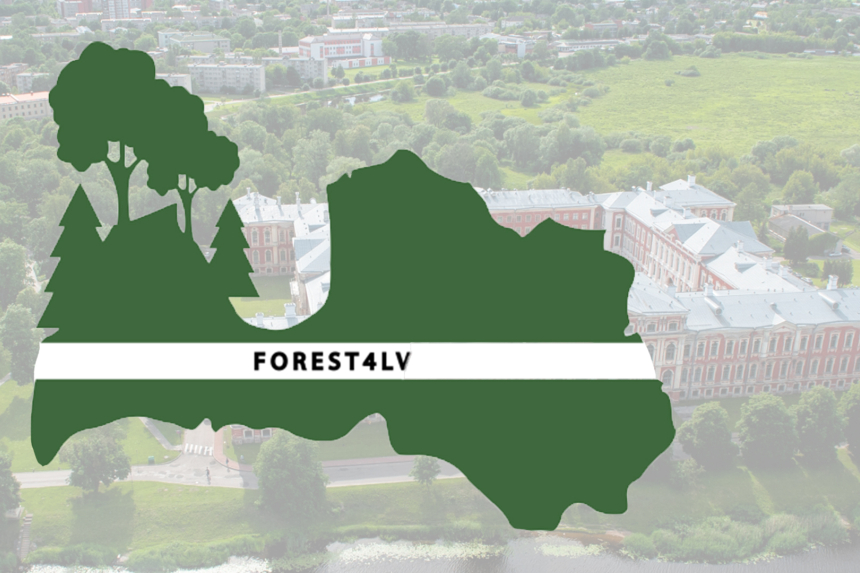
On 9 September in Jelgava, at the Latvia University of Life Sciences and Technologies, the 12-month progress seminar of the State Research Programme (No. VPP-ZM-VRIIILA-2024/2-0002) Forest4LV - Innovation in Forest Management and Value Chain for Latvia's Growth: New Forest Services, Products and Technologies took place.
Opening the event, Project Leader Dr.sc.ing. Uģis Cābulis emphasized that this initiative is not only an important example of collaboration between Latvia’s research institutions, but also a key instrument for implementing the national bioeconomy strategy. Head of the LSIWC section Dr.sc.ing. Jānis Rižikovs pointed out that the results achieved in the first year already demonstrate how research outcomes are being transformed into real prototypes and technologies, while the next step is to make them visible to both the scientific community and industry.
Wood as a Material
Research on wood as a material confirmed that even less-used resources can serve as the basis for significant innovations. Dr.chem. Bruno Andersons and Dr.sc.ing. Dace Cīrule focused on the properties of small-dimensional and juvenile wood, showing that with appropriate processing and bonding methods, such material can become competitive in construction. Complementing this, Dr.sc.ing. Juris Grīniņš demonstrated how thermal modification of alder in a nitrogen atmosphere improves moisture stability, mechanical strength, and outdoor durability. Dr.sc.ing. Uldis Spulle meanwhile explored the use of innovative bio-based adhesives.
Biorefining
In the field of biorefining, the work demonstrated that seemingly low-value resources can be transformed into high-value products. Dr.sc.ing. Māris Puķe optimized the catalytic pretreatment of birch veneers, achieving furfural yields of up to 67%, glucose yields of 99%, and acetic acid yields of 100% of the theoretical maximum. The process also yielded 5-hydroxymethylfurfural – an important intermediate for the synthesis of bio-based chemicals. In parallel, Dr.chem. Māris Lauberts presented studies on glycerol extracts, proving their antioxidant activity and ability to diffuse through the skin barrier. Experiments showed that alder bark extract diffuses within three hours, while pine bark extract requires a longer period. These results confirm the potential of bark extracts as natural active ingredients for cosmetics and medical products.
Polymers and Insulation
In polymers and insulation, the focus was on utilizing wood processing by-products. The work of PhD Aiga Ivdre demonstrated that suberinic acid fractions can be used to produce polyurethane foams with up to 75% renewable raw material content. These foams proved to be thermally stable and showed improved fire resistance. Research by PhD Aleksandrs Aršaņica confirmed that polyurethane foams based on bio-polyols derived from pine bark extracts can replace commercial solutions and, in many cases, even demonstrate superior mechanical properties. Dr.chem. Anrijs Verovkins’ studies revealed that modifying pine wood chips with suberinic acids improves adhesion with the polymer matrix, enhances mechanical properties by 4–10%, and reduces water absorption.
Innovative Products from Residues
In the search for original solutions, particular attention was given to the use of residues for high-value products. Dr.chem. Laura Andže showed that birch heartwood, after delignification and impregnation with chitosan and citric acid, becomes a mechanically stable, moisture-resistant, and biocompatible material suitable for osteosynthesis implants. In vitro tests with human stem cells confirmed high biocompatibility, and the next stage will include prototype development and ex vivo testing. Dr.sc.ing. Oskars Grīgs, meanwhile, presented a biological preparation based on Phlebiopsis gigantea capable of protecting pine stumps against root rot caused by Heterobasidion fungi. Both laboratory and pilot trials confirm the strong potential of this solution for forestry practice.
Efficient Use of Wood Resources
Efficiency is just as important as innovation. Dr.sc.ing. Uldis Spulle’s studies showed that advanced simulation and modelling techniques can optimize the properties of wood cellular materials and lightweight panels, ensuring greater dimensional stability and mechanical strength.
Closing the seminar, Dr. Uģis Cābulis stressed that the success of Forest4LV should not be measured solely by the number of publications and prototypes, but also by how effectively it helps lay the foundation for the future transformation of the forest sector. In the coming months, partners must ensure regular reporting and implement the data management plan. The next major milestone will be the final conference in Jelgava in December 2025.
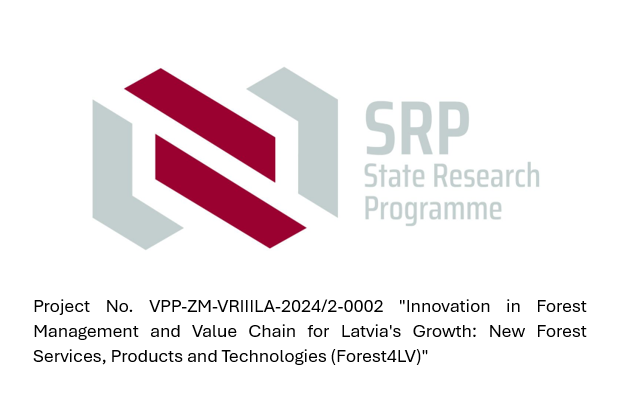
| 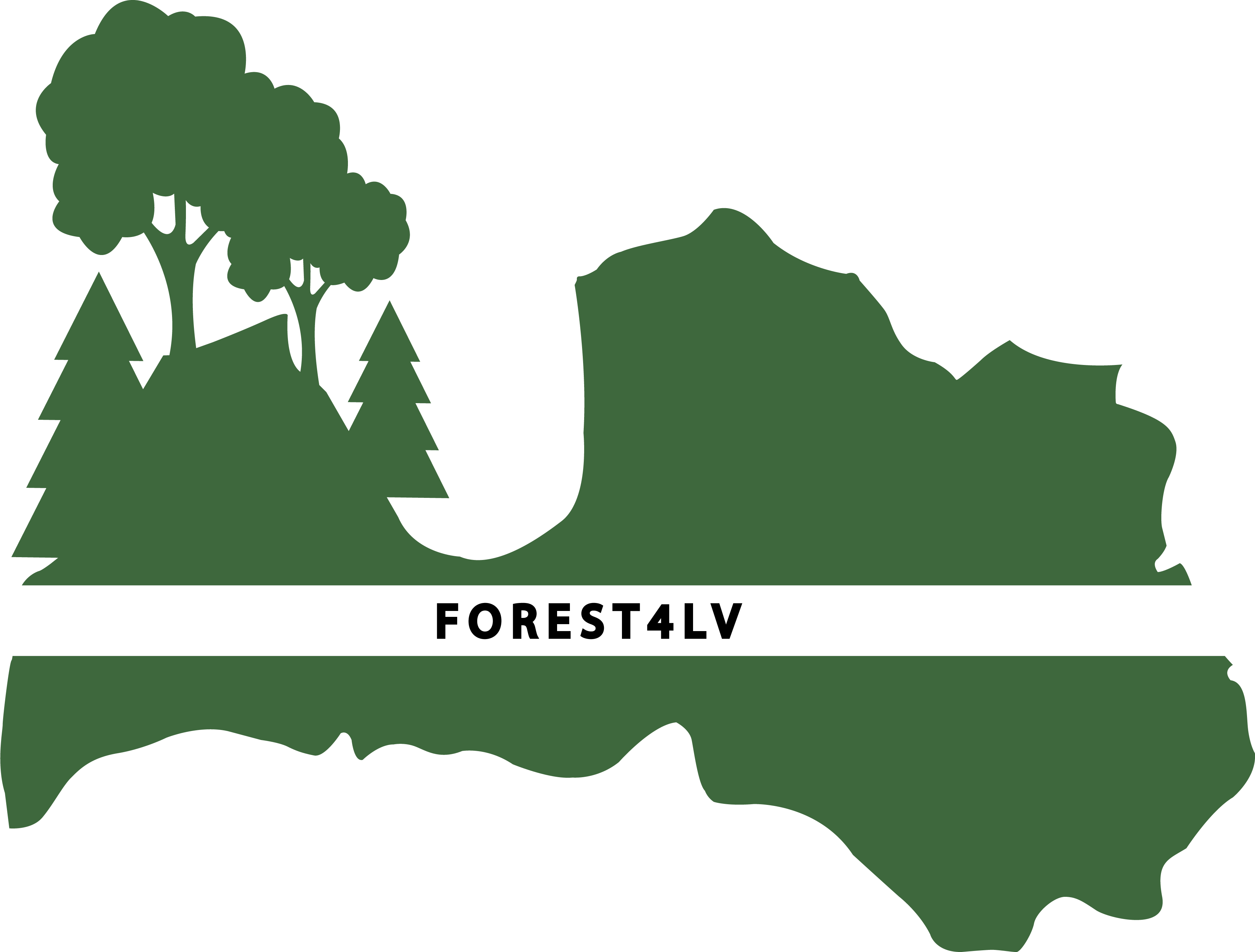 |
